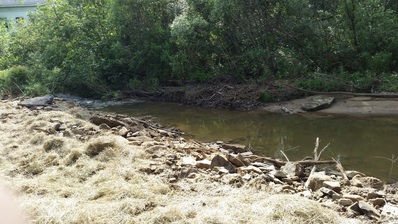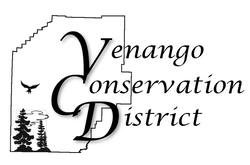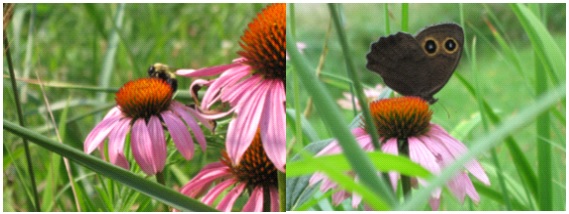|
The purple cone flower, like the ones pictured, are native to eastern and central North America. There are an herbaceous flowering plant of the genus Echinacea. They bloom from mid-summer through early fall.
There are nine species of Echinacea. Some species have been used for medicinal purposes. Native Americans use the roots as a traditional healing herb. Today the roots are used for herbal medicines. Two species are considered by the US Fish and Wildlife as endangered. They are E. Tennesseensis and E. Laevigata. The name “cone flower” is rooted from the Greek echinos which means “sea urchin”. Some Native Americans call them “elk root” because they observed that elk would seek out and eat the roots when hurt or unwell. We call them “cone flowers” because their petals are reflexed. At the Venango Conservation District offices, we planted purple cone flowers because they are a native plant. Our purpose was to provide wildlife food for our garden visitors. Butterflies and bees consume the nectar of our cone flowers, and in the winter, goldfinches eat up the seeds. Cone flowers also have network of root fibers so they can bind soil which protects against erosion.
2 Comments
 The Venango Conservation District recently completed repair work to Cherrytree Run that was eroding the stream bank, causing pollution and land damage to a property in Cherrytree Township. Storm water was picking up sizable rocks and depositing them in a new location, which was changing the path of the waterway. The land owner reported loosing several feet of his property. Staff from both Pennsylvania DEP and the Venango Conservation District was able to visit the property to view the damage in 2014. The group formulated a plan to remove the gravel bar that was forming and re-deposit the material at the original stream bank channel. This work will encourage the storm water to make its way back through the original waterway, thereby reducing erosion and damage to the land owner’s property. In June of 2015, district staff and landowners got together to make this work happen. The work took only about a day. Staff intends to return to inspect the progress of vegetation and stabilization of the work. It is expected that existing vegetation should re-establish easily. The district expects the water flow to be less damaging and that the re-established stream channel should now be more stable. The Venango Conservation District is very pleased with the completion of this project. The district intends to continue stream bank repair at other sites around Venango County that have been causing nonpoint source pollution as a result of high water events. Check back to read more about our progress. |
CATEGORIESs
All
Archives
April 2024
|


